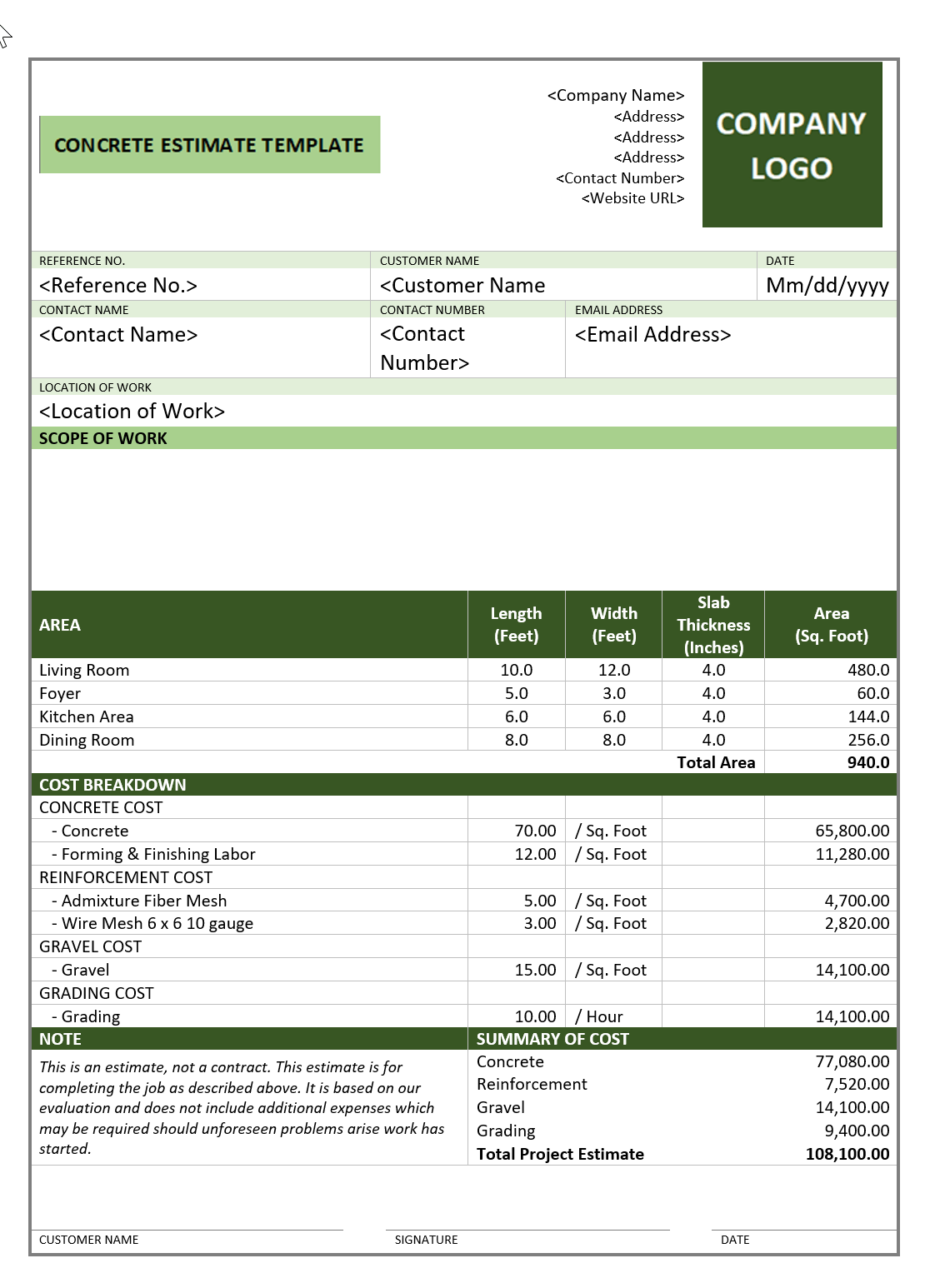
When it comes to construction projects, having an accurate estimate is crucial. A concrete estimate template is a valuable tool that can help you calculate the costs and materials needed for your project.
In this guide, we will walk you through the process of creating a concrete estimate template from scratch. Whether you are a contractor, project manager, or DIY enthusiast, this guide will provide you with all the information you need to create a comprehensive and reliable concrete estimate template.
What is a Concrete Estimate Template?
A concrete estimate template is a document that outlines the costs and materials required for a concrete construction project. It provides an itemized breakdown of the expenses involved in the project, including labor, materials, equipment, and any additional costs. The template serves as a guide for estimating the total cost of the project and helps ensure that the project stays within budget.
Creating a concrete estimate template may seem overwhelming at first, but with the right approach and information, you can easily create an effective template that suits your specific needs. In the following sections, we will guide you through each step of the process.
Step 1: Define the Scope of the Project
The first step in creating a concrete estimate template is to define the scope of the project. This involves determining the size and complexity of the project, as well as any specific requirements or constraints. It is important to gather as much information as possible, including architectural plans, project specifications, and any other relevant documents.
Once you have a clear understanding of the project scope, you can start breaking it down into smaller tasks and components. This will help you identify the specific materials and resources required for each task, which will be essential for creating an accurate estimate.
Step 2: Calculate the Quantity of Concrete
The next step is to calculate the quantity of concrete required for the project. This will depend on the size and thickness of the concrete elements, such as slabs, walls, and footings. To calculate the quantity of concrete, you will need to measure the dimensions of each element and calculate the volume using the formula:
Volume = Length x Width x Height
For example, if you have a concrete slab with dimensions of 10 feet by 20 feet and a thickness of 6 inches, the volume would be:
Volume = 10 ft x 20 ft x 0.5 ft = 100 cubic feet
Once you have calculated the volume for each concrete element, you can convert it to the required number of cubic yards by dividing it by 27 (since there are 27 cubic feet in a cubic yard).
Step 3: Determine the Cost of Materials
After calculating the quantity of concrete required, the next step is to determine the cost of materials. This includes concrete, reinforcement, formwork, and any other materials needed for the project. To get an accurate estimate, it is recommended to contact local suppliers to get current prices for the materials.
You can then multiply the quantity of each material by its cost per unit to calculate the total cost. For example, if the cost of concrete is $100 per cubic yard and you need 5 cubic yards, the total cost of concrete would be:
Total Cost = Quantity x Cost per Unit
Total Cost = 5 cubic yards x $100/cubic yard = $500
Step 4: Account for Labor and Equipment Costs
In addition to materials, it is important to account for labor and equipment costs in your concrete estimate template. Labor costs will depend on the number of workers required and the duration of the project. Equipment costs will depend on the type and duration of equipment rental.
To calculate labor costs, you can estimate the number of hours required for each task and multiply it by the hourly rate for labor. Similarly, for equipment costs, you can estimate the number of hours of equipment usage and multiply it by the hourly rate for equipment rental.
1. Labor Costs
When estimating labor costs, consider the following factors:
- The number of workers required for each task
- The hourly rate for labor
- The duration of each task
For example, if you have two workers who will work for 8 hours each at an hourly rate of $20, the labor cost would be:
Labor Cost = Number of Workers x Hours x Hourly Rate
Labor Cost = 2 workers x 8 hours x $20/hour = $320
2. Equipment Costs
When estimating equipment costs, consider the following factors:
- The type of equipment required for each task
- The hourly rate for equipment rental
- The duration of equipment usage
For example, if you need to rent a concrete mixer for 4 hours at an hourly rate of $50, the equipment cost would be:
Equipment Cost = Hours x Hourly Rate
Equipment Cost = 4 hours x $50/hour = $200
Step 5: Include Additional Costs
In addition to materials, labor, and equipment costs, it is important to include any additional costs that may arise during the project. This may include permits, subcontractor fees, transportation costs, and other miscellaneous expenses.
Make sure to thoroughly review the project specifications and consult with relevant parties to identify any potential additional costs. Include these costs in your concrete estimate template to ensure an accurate estimate of the total project cost.
Step 6: Summarize and Format the Estimate
Once you have gathered all the necessary information and calculated the costs, it is time to summarize and format the estimate. This involves organizing the information into a clear and concise format that is easy to understand.
Include a summary section at the beginning of the estimate, providing an overview of the project scope and total cost. Break down the costs into categories, such as materials, labor, equipment, and additional costs. Use tables, charts, or bullet points to present the information in a visually appealing manner.
Step 7: Revise and Review the Estimate
Before finalizing the concrete estimate template, it is crucial to revise and review the estimate for accuracy and completeness. Double-check all the calculations, quantities, and costs to ensure they are correct. Review the estimate with relevant stakeholders, such as the client, project manager, or construction team, to get their input and make any necessary adjustments.
Remember that an accurate estimate is essential for the success of the project, so take the time to thoroughly review and revise the estimate before using it for your project.
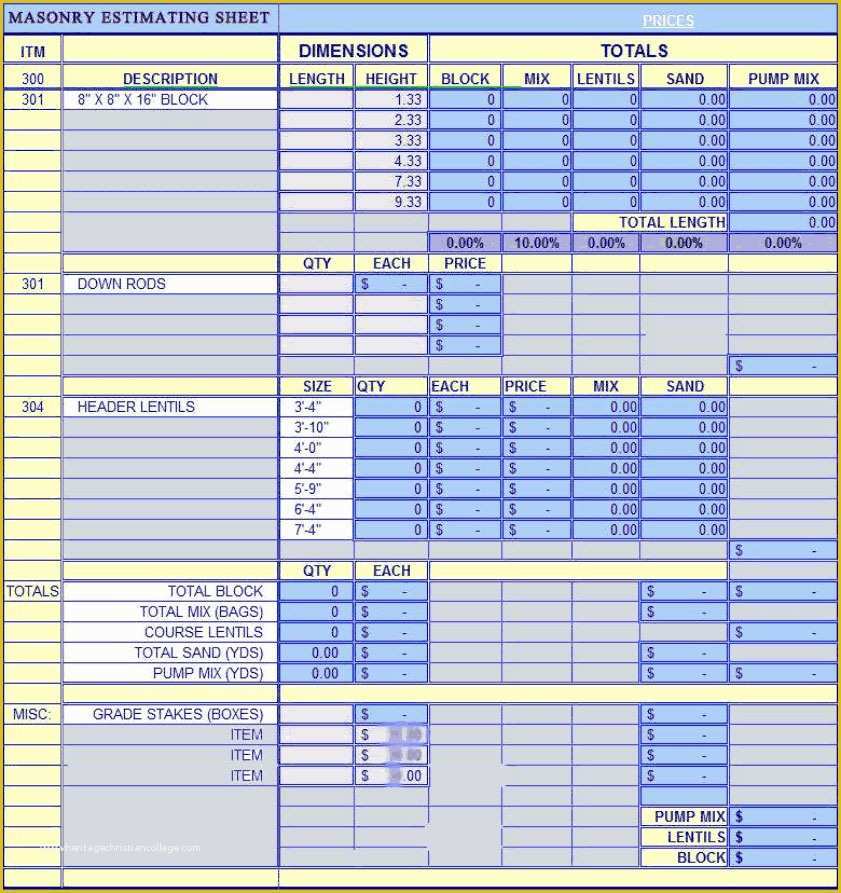
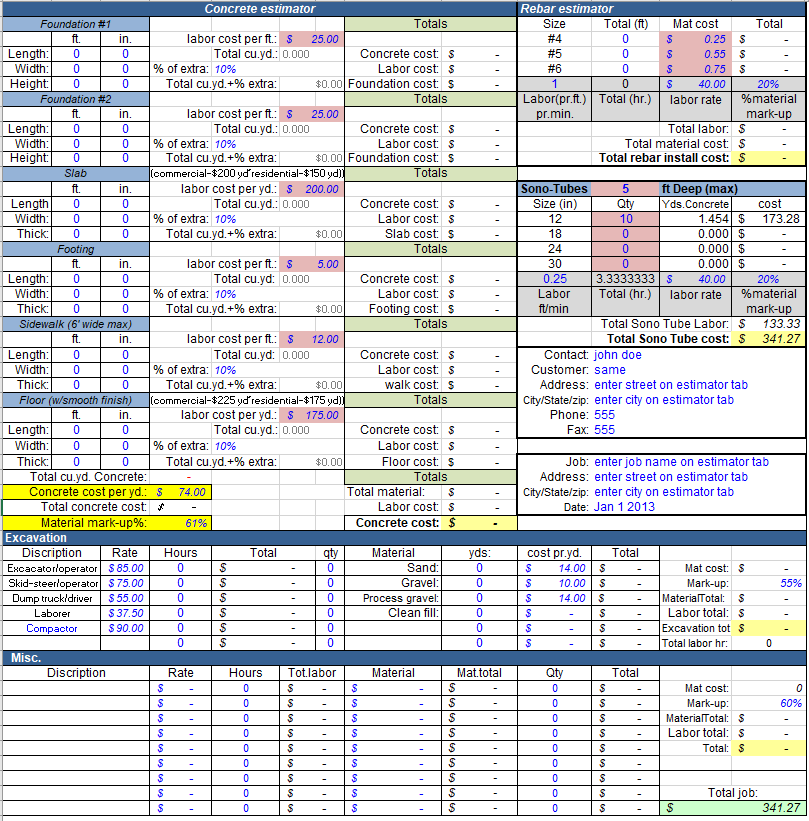
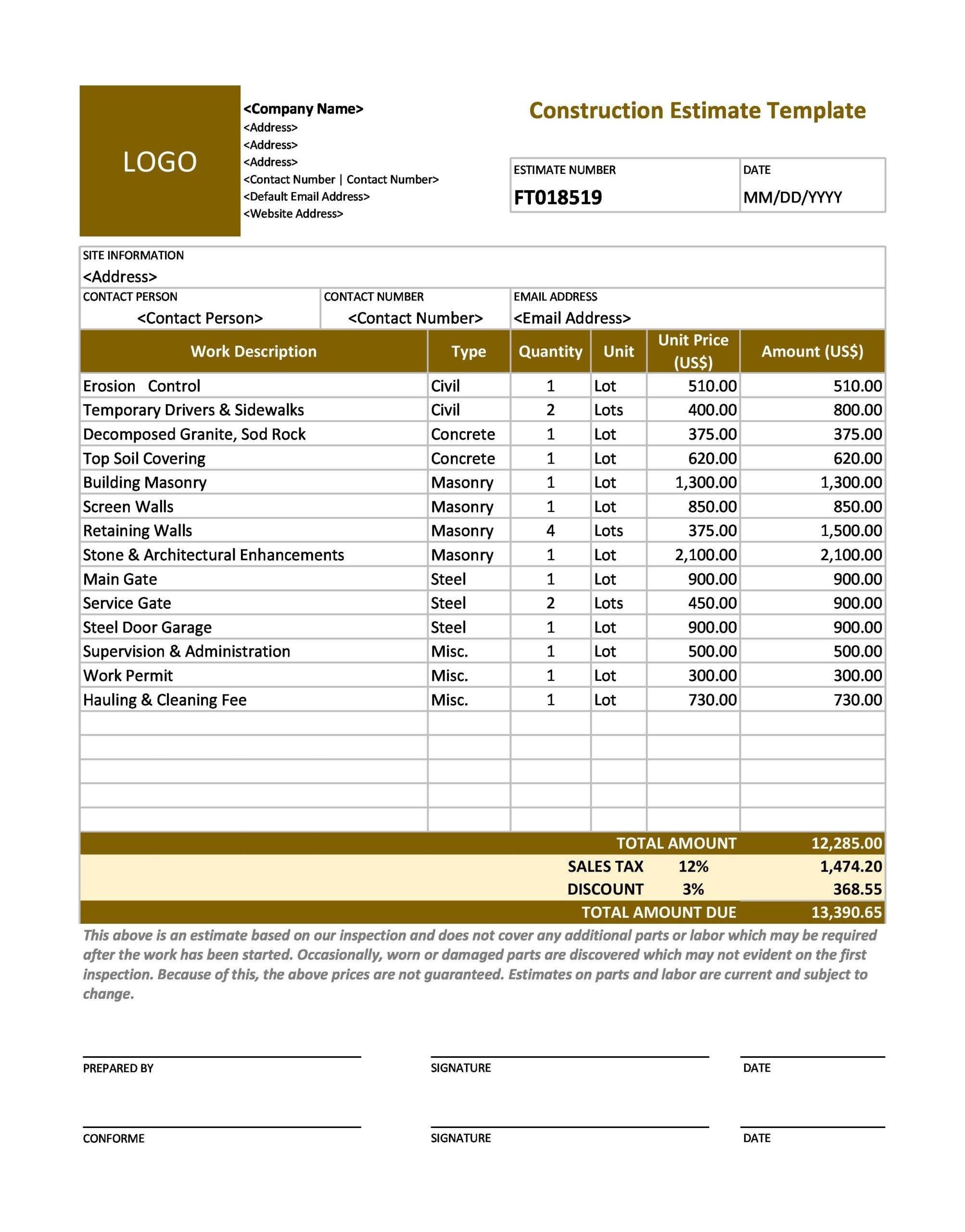
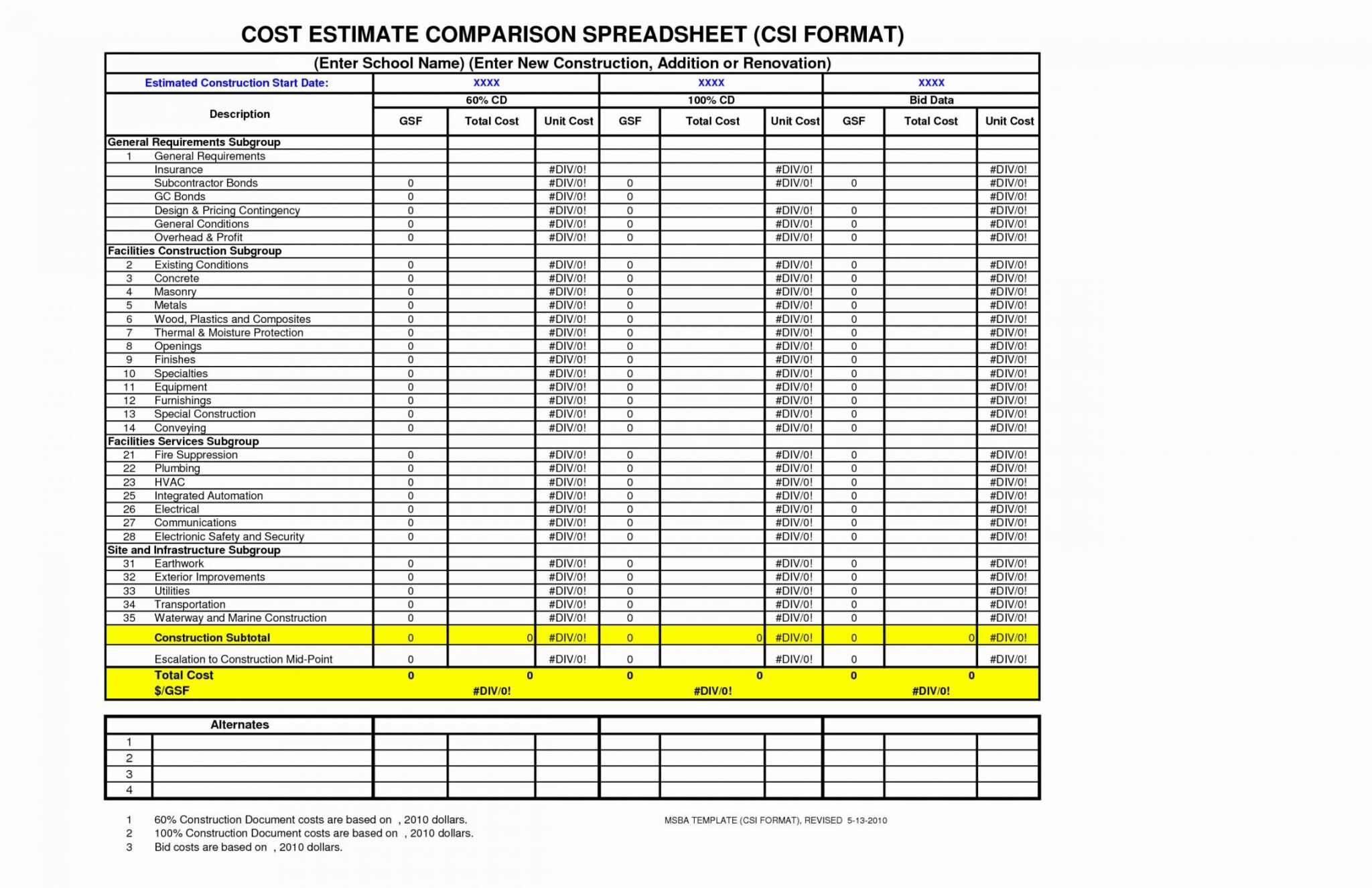
Conclusion
Creating a concrete estimate template is an essential step in any construction project. It helps you calculate the costs and materials required, ensuring that the project stays within budget. By following the steps outlined in this guide, you can create a comprehensive and reliable concrete estimate template that will serve as a valuable tool for your construction projects.
Concrete Estimate Template Excel – Download